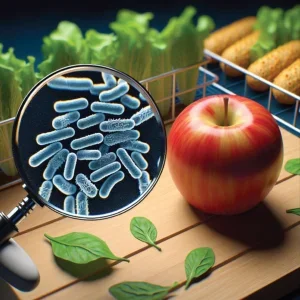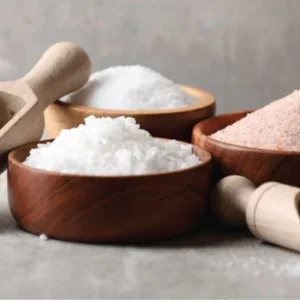
When the Soil Association released its Organic Market Report in February this year, the numbers (on the face of it) made for impressive reading. Growth is up 25.4% over the previous three years – compared with the prepandemic performance, UK organic sales in 2019 were £2.45bn. Evidence, perhaps, that organic represents a resilient investment opportunity with a strong growth trajectory, at least.
Yet when set in context, the market size is still miniscule when compared with the overall food and drink market. And this point is not lost on the industry, which has long accepted that more needs to be done to promote itself.
One elephant in the room has been supply chains; frayed by a combination of Brexit and the Covid-19 pandemic that subsequently led to worker shortages from seasonal fruit pickers, through to abattoir staff and lorry drivers. This has created huge problems for farmers across the UK and highlighted the lack of resilience in the food system.
But that doesn’t mean resolving these issues is necessarily insurmountable.
Making the agroecological transition
A recent study by the French think-tank IDDRI showed that if implemented alongside dietary shifts, an agroecological transition could move the EU from a net importer to a net exporter of agricultural goods to the global market, for example.
In the UK, meanwhile, the Soil Association’s head of farming policy, Gareth Morgan, is quick to point out that: “Although the organic market represents a small part of the UK food and drink industry, millions of pounds are still spent on organic food and drink every day. The organic market has seen 11 consecutive years of growth and is worth more than £3bn.”
This is hardly surprising given climate change has now climbed to the top of the political agenda. But to a lesser extent, concerns about wildlife populations being in freefall are now being acknowledged, meaning it’s becoming increasingly accepted that we must farm more in harmony with nature. And with 50% more wildlife on organic farms, this is an important part of a longer-term solution.
Unsurprisingly, Morgan is calling on the UK government to do more to support farmers to adopt nature-friendly farming, such as agroecology and organic, across their whole farms. “So far ministers have failed to make clear how they will give farmers confidence to invest in the radical changes needed for a resilient and sustainable farming sector,” he notes.
Getting rid of the CAP
Case in point is the government’s Environmental Land Management Scheme, crafted post-Brexit to represent a definitive move away from the old agricultural policy.
The key is the phasing out of subsidies for land ownership and tenure and radically improving services to farmers. Through the Agricultural Transition Plan, the aim is to expand schemes to pay farmers and land managers to provide environmental goods and services alongside food production. It will also offer one-off grants to support farm productivity, innovation, research and development, in a way that hopes to help the country achieve these goals. While the government claims these reforms “are essential to help us grow and maintain a resilient, productive agriculture sector over the long term and at the same time achieve our ambitious targets for the environment and climate,” Morgan believes it can go further.
“There are welcome elements in the Environmental Land Management Scheme – but they are doing little more than tinkering around the edges of the challenge,” he says. “Government must provide the long-term vision to help farmers do more than make small changes. They need a package of guidance and incentives that spark a shift to nature-friendly farming like organic across their entire farms.”
Referring to organic farming practices, Morgan adds “the new incentives for organic farming practices – like avoiding insecticides and using legumes for soil fertility instead of chemicals – are welcome”. “But,” he stresses, “information on the previous commitment to an Organic Standard within the Sustainable Farming Incentives, or detailed clarity for ongoing support for our sustainable farming pioneers, is still missing. Support for game-changing action like planting more trees on farms is also desperately needed.”
Noteworthy is that other governments are already taking action. For example, a 30% target for organic farmland in Germany, and 25% across the EU, as part of the Farm to Fork strategy. Closer to home, the Scottish government has committed to doubling organic land by 2026.
More ambition is needed
Yet, as Morgan argues: “The UK government has so far not made a similar commitment, [even if] payment rates for farmers converting to organic in England, via the Countryside Stewardship Scheme, doubled in 2022. This investment is [at least] encouraging, but more ambition is needed from Westminster so that other parts of the UK can follow this lead.”
In the vertical farming space, meanwhile, a significant amount of work is being undertaken. One example is the Dundee-based James Hutton Institute – a globally recognised research organisation with a remit to “deliver fundamental and applied science to drive the sustainable use of land and natural resources”.
Vertical farming, such as growing crops indoors, is increasingly being seen as the way forward to producing higher volumes of better-quality crops all year round, as well as ensuring food production is closer to customers. From a sustainability standpoint, it is also a means of ensuring greater efficiency through employing the use of hydroponics, which will reduce water use significantly.
$2.45bn
The market size of organic products in the UK in 2019.
Soil Association
Most systems, for example, employ recirculation where plants will absorb the water they need and any run-off is subsequently channelled back to a reservoir. In a system with no leaks, water loss will typically only be due to evaporation and transpiration (the process of losing water through the plant’s leaves).
However, some growers are resorting to water vapour condensers in their ventilation systems to capture and return the water back into their systems. As a result, according to the US National Park Service, water usage can be brought down to just 10% of what would ordinarily be required for conventional farming outdoors. As Professor Derek Stewart, director of the Advanced Plant Growth Centre (APGC) at the Institute, puts it: “There are several projects which are currently looking at extending the effectiveness of vertical farming, including increasing food sustainability.”
Enhancing fresh produce
“One of the main projects is looking at ways of enhancing fresh produce and ensuring there is maximum efficiency within its production,” adds Stewart. “We are doing this by focusing on ways to reduce the carbon footprint during the yield process, and ensuring we can maintain, or even enhance, certain qualities from taste to aroma. More recent work has included exploring boosting the nutritional content of fresh produce.”
“The recent fresh produce scarcity is a clear example of the energy cost crisis leading to a collapse in UK production, with huge impacts on food and nutritional security.”
Professor Derek Stewart
Stewart notes that within vertical farming, total control of the growing environment will be a powerful tool. He adds: “However, we have found that with some great sophistication, we can also control the plant biochemistry, allowing us to effectively switch off and on some of the biosynthetic pathways, demonstrating that the ability to tailor the produce quality is within our grasp.”
What this means in reality is being able to tailor the taste and aroma of many fresh produce crops, without resorting to any form of genetic manipulation or gene editing. “Allied to this, and by manipulating the light recipes – wavelengths, intensity, duration etcetera – and inputs – fertiliser and specific additions – we have shown that we can enhance vitamin, mineral and protein contents in these crops,” he further notes. This paves the way to creating nutrient dense crops for all, or to offer new enhanced produce to groups with specific nutritional needs, such as the young, ill or nutritionally compromised.
Tools and technologies
As an extension of this, the institute is also exploring vertical-farming-based tools and technologies for nextgeneration pharma and ingredients, such as sustainable natural colours, and bioactive and functional molecules.
A key consideration is what can be done to drive future growth. For Stewart, the pathway is clear; namely removing the main barrier of the cost of production. Moreover, the systems should be integrated with renewable energy systems, sources, and the sector as a whole. One potential consequence, for example, is that crop production may move to areas where renewable energy is plentiful, rather than where the crops are traditionally grown; even if on-farm renewable energy is already a growing sector, according to Stewart.
“The recent fresh produce scarcity is a clear example of the energy cost crisis leading to a collapse in UK production, with huge impacts on food and nutritional security.” Indeed, ‘black swan’ events such as the Covid pandemic induced fraying of global supply chains and the more recent invasion of Ukraine by Russia, has hammered home the point that some events can neither be legislated for nor anticipated.
In the meantime – and as a turn-key provider for indoor farming – CambridgeHOK knows better than most when it comes to optimising the total design for a specific facility. Joint managing director, Patrick Harte, argues that while there are currently higher energy and material challenges for the sector as a whole, such costs “are relatively short-term items with both costs now starting to fall”.
“There continue to be developments in LED lighting and HVAC [heating, ventilation and air conditioning],” he notes, adding, “We also see that it is vital to have the right route to market and correctly sized farm so that the customer is able to sell out their capacity. Given the relatively commoditised elements in the market, matching capacity to demand is vital in an energy-intensive system.”
Indeed, in the vertical farming/hydroponics space it is already self-evident that technological advances and innovations are continually helping to mitigate capital costs and ongoing overheads. Moreover, the more these processes can be automated the better – not least because while capital costs go up because of the initial expenditure, the result is that fewer people are needed, going forward, meaning operating costs will come down longer term. Meanwhile, one desirable by-product of automation will be that it will provide a cleaner crop, due to the reduced contact between humans and crops.
In short, an industry now witnessing significant biological and technological innovation is well positioned to take advantage, longer term. The outstanding question though remains whether the UK government has the wherewithal to help accelerate this process.






